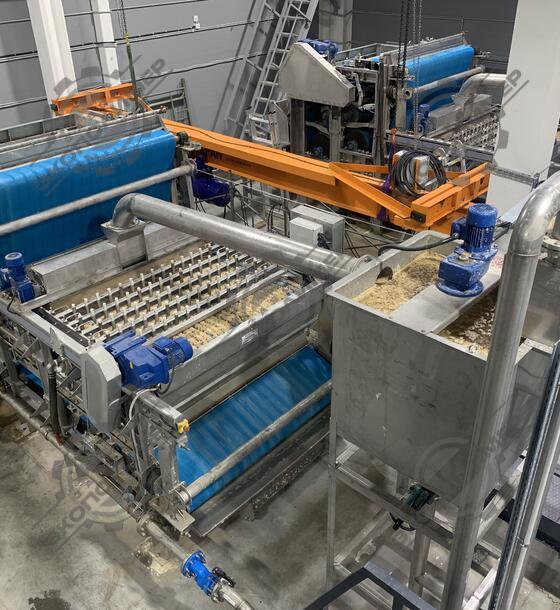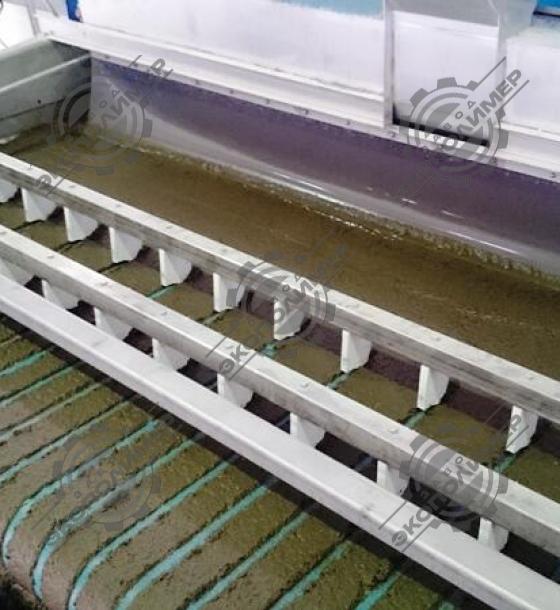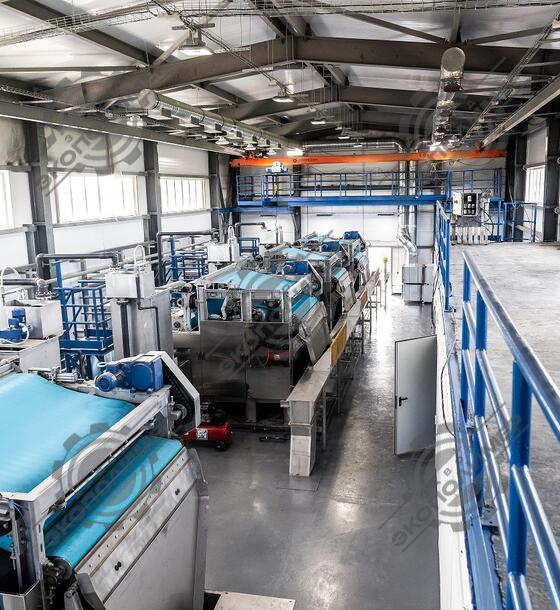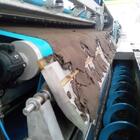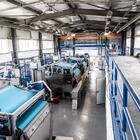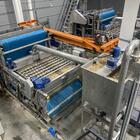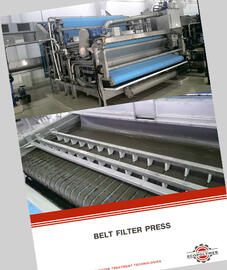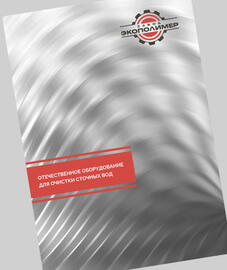EFP-L belt filter press
EFP-L belt filter presses refer to continuous-action apparatuses and are designed for treating sediments, suspensions and slurries by filtration under pressure through filter cloths.
The kinematic scheme with the vertical arrangement of pressing (squeezing) shafts serves as the basis of the design of the belt filter press.
EFP-L belt filter presses are available in three width sizes of filter cloths: 1000, 2000 and 3000 mm, and in several modifications:
- S - standard (without a built-in gravity table);
- O - with additional squeezing device;
- T - with additional thickening gravity table;
- A - with additional squeezing device and thickening gravity table.
The size of the EFP-L is chosen according to the required capacity, and the model is determined by the properties of the initial sludge and the requirements for the dehydrated cake.
The filter press kit includes a feed mixer (flocculator), a flocculant solution (including piping) and a control cabinet. Optionally, the filter press can be equipped with a stainless steel trough to collect filtrate and technical water, which eliminates the need for concreting baths.
A flocculator with an adjustable mechanical mixer allows a qualitative mixing of sludge and minimizes the costs of the reagents. An automatic paddle feeder, as well as agitators in the gravitational dewatering zone can evenly distribute sludge throughout the width of the cloth, regardless of the viscosity of sludge, and improve the outflow of the filtrate.
Rinsing of belts is carried out by water under pressure through specially designed self-cleaning nozzles.
The filter press is equipped with a pneumatic belt tensioning and positioning system, which includes a compressor, pneumatic cylinders, position sensors, and an air distribution panel.
The control system provides manual and automatic modes of operation of the filter press, setup of the operation of the drives and process equipment necessary for the operation of the filter press, as well as indication of their status, the status of the supply network and emergency situations.
All components of the filter press are made of corrosion-resistant materials, or have an anticorrosive protective coating. Filter belts are made of polyester with the use of monofilament weaving.
Parameter name | Unit of measurement | Parameter value | ||
Feed capacity: - for models C, O - for models T, A | m3/h |
4–7 7–15 |
8–15 20–40 |
15–28 30–55 |
Filter belt width: - effective - total | mm |
800 1000 |
1800 2000 |
2800 3000 |
Feed moisture content: - for models C, O - for models T, A | % |
93–96 96–99 | ||
Dewatered sludge moisture content* | % | 72-80 | ||
Average specific flocculant flow rate per ton of absolutely dry sludge* | kg/t | 2.5-4.0 | ||
Supply voltage | V | 380 | ||
Supply frequency | Hz | 50 | ||
Control system protection rating as per GOST 14254 | – | IP54 | ||
Ambient operating temperature | °С | +1 — +35 | ||
Weight of filter press models С, О** | kg | 2930 | 7420 | 9820 |
Weight of filter press models T, A** | kg | 4250 | 7650 | 12,570 |
*The value depends on the physical and chemical properties of the feed product and the type of flocculant used;
**Incl. the weight of the sump, not incl. the weight of the flocculant mixer and the feed product.
The sludge dewatering line may optionally include the stand-alone belt or drum thickener, which increases the overall throughput of the production line, especially when processing low-concentrated sludge (5-20 kg of dry matter per cubic meter of sludge).
- The squeezing shafts are located close to the vertical plane; each shaft is equipped with a filtrate collection trough. This prevents the filtrate from falling onto the previous and subsequent shafts.
- A filter press cloth positioning system, which includes a compressor, pneumatic cylinders, position sensors, and an air distribution panel, ensures reliable trouble-free operation of the equipment and increases the service life of the cloths.
- The drive and main squeezing shafts with rubber coating ensure a reliable, non-slip, movement of the cloths and efficient drainage of the filtrate.
- The additional squeezing system provides a high stable pressing pressure, which allows achieving the required degree of sludge dewatering.

